
Published by the Centre for Food Safety
Feature Article
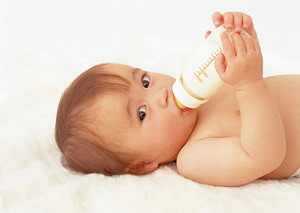
Legislative Proposals Relating to Formula Products and Foods Intended for Infants and Young Children under the Age of 36 Months in Hong Kong
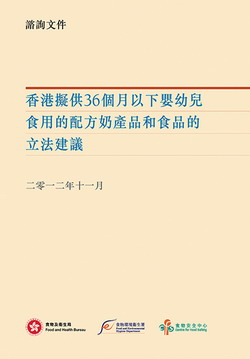
In order to safeguard the health of infants and young children, the Administration has formulated legislative proposals relating to formula products and foods intended for infants and young children under the age of 36 months. These legislative proposals have been drawn up with reference to the principles of the Codex Alimentarius Commission (Codex) , taking into account the international practices. The proposals comprise requirements on nutritional composition of infant formula and nutrition labelling of infant formula, follow-up formula and other foods for infants and young children. Salient features of the legislative proposals are as follows:
Key aspects of the proposed legislation:
- Codex requirement on nutritional composition (i.e. energy and 33 nutrients as specified by Codex) for infant formula before complementary feeding is introduced;
- nutrition labelling requirement for infant formula before complementary feeding is introduced, by listing the energy and 33 nutrients which are required to be present in infant formula as specified by Codex;
- nutrition labelling requirement for follow-up formula intended for infants and young children under the age of 36 months by listing the energy and 25 nutrients as specified by Codex;
- nutrition labelling requirement for foods intended for infants and young children under the age of 36 months by listing the energy and nutrients required for such foods as specified by Codex, as well as labelling the sodium content in these products; and
- a suitable grace period for the trade, the length of which will be determined with regard to the trade's and laboratories' readiness for the proposed changes, aspiration of the general public, etc.
As for the regulation of nutrition claims, it is a complex and controversial issue. At present, there is still a lack of international consensus on the regulation of claims. To avoid delay in the task of regulating nutritional composition of infant formula and nutrition labelling of formula products and foods intended for infants and young children under the age of 36 months, the Administration has proposed to tackle the issue of regulating claims at a later stage.
A two-month public consultation exercise was conducted from 20 November 2012 to 21 January 2013 to collect views from the public and stakeholders. Strong support for the legislative proposals was received from respondents. Some urged that the proposals be enacted as soon as possible to protect the health of infants and young children. The Administration will therefore proceed with drafting the legislation for introducing to the Legislative Council.
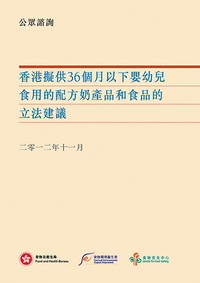

Readers' Corner
Beware of Ciguatera Fish Poisoning in Summer Times
Ciguatera fish poisoning is caused by the consumption of coral reef fish that contain ciguatoxins. The toxins accumulate up the food chain which starts with the herbivorous fish that feed on toxic marine plankton in the coral reef and accumulate successively in the body of larger carnivorous fish.
Ciguatoxins are a group of heat-stable, fat-soluble compounds. They are produced by marine plankton Gambierdiscus toxicus. The plankton live in the oceans between 32°N and 32°S and ciguatera fish only appeared in these regions of the oceans . The toxins are up to 50 to 100 times more concentrated in the viscera, liver and gonads of affected fish, while the fish remain asymptomatic. As the toxins are heat-stable and cannot be removed by cooking or processing, they can affect the nerve and muscle functions of persons who consume ciguatera fish. Ciguatera fish poisoning is now a common type of marine food poisoning worldwide, due to increased international commerce in seafood.
Initial symptoms of ciguatera fish poisoning can appear 30 minutes after consuming ciguatera fish. The symptoms can be gastrointestinal or neurological. Gastrointestinal symptoms such as vomiting, diarrhoea, nausea and abdominal pain usually last only a few days, followed by neurological symptoms like tingling in the oral region and extremities, itching of the skin, reversal of hot/cold temperature perception, fatigue, muscle and joint pain which last longer. In severe cases, hypotension, bradycardia, respiratory difficulties and arrest may develop but death is uncommon. The symptoms can be aggravated by factors such as previous intoxication of ciguatera fish poisoning or consumption of alcoholic beverages, peanuts or bean products along with coral reef fish.
Advice for the Trade:
- Avoid sourcing fish from waters/areas recently reported to be associated with ciguatera fish poisoning.
- Purchase coral reef fish from safe sources.
- Keep relevant transaction records (e.g. acquisition records, supply records or capture records , etc. ).
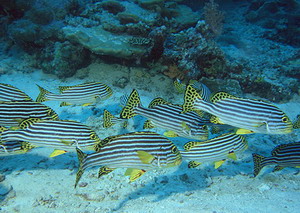
Choose Food Wisely
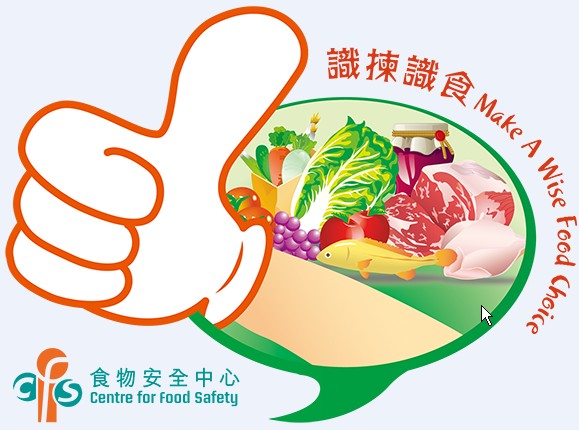
Always purchase food from licensed and reliable suppliers with good hygienic condition. Do not buy food from suspicious and unknown sources, such as food products available in bulk stock at an unusually low price.
Be sure to choose fresh food products rather than those with an abnormal colour or odour or damaged products. Do not buy food with damaged, broken, dented or rusty packages because the food inside may have deteriorated or have been contaminated.
Attention should also be paid to the expiry date (especially the "use by" date) of pre-packaged foods. Avoid buying perishable foods that will soon expire. Check their expiry date before use and store them according to the first-in-first-out principle .
When ordering foods meant to be held hot, do not accept those that are not kept at 60 oC or above during their delivery. For foods intended to be received chilled or frozen, chilled foods should be kept at 4 oC or below and frozen foods at -18 oC or below during delivery.
Info Corner
Hong Kong Continues Import Ban on Game Civet Cats
Hong Kong introduced the import ban on game masked palm civets (also known as Himalayan palm civets or gem-faced civets, or commonly referred to as civet cats) after the outbreak of Severe Acute Respiratory Syndrome (SARS) in 2003. The import ban on civet cats aims to minimise the risk of zoonotic diseases. In view of the public health threat from Middle East Respiratory Syndrome Coronavirus (formerly known as novel coronavirus), the import ban is also extended to bats.
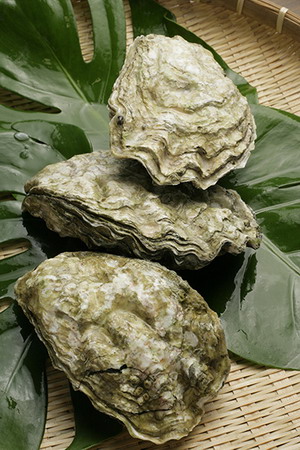
Tips for Getting the Temperature Right
When Cooking Shellfish
- Heat to an internal temperature of 90 o C and then maintain for 90 seconds.
- Remove the shells before cooking as they impede heat penetration. Otherwise, cook in boiling water until their shells open; and then cook for another 3 to 5 minutes.
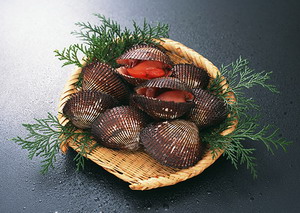
News on New Dishes
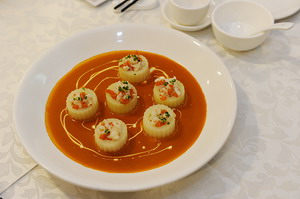
Seafood Stuffed Hairy Gourds
Summer has rolled around! In this issue, we are honoured to have invited Chef CHAN Ka-kui, head chef of the Tin Hau Branch of Royal Legend, a signatory of the Food Safety Charter, to demonstrate how to prepare a summer dish featuring the seasonal hairy gourds – Seafood Stuffed Hairy Gourds.
| Preparation Steps | Small Tips, Big Wisdom | ||
|---|---|---|---|
 |
Receiving | First, purchase frozen shrimps, frozen scallops, frozen coral clams, fresh lobster and other ingredients from approved and reliable sources. | Upon receipt of the ingredients, check with meticulous care to ensure their freshness. Frozen seafood should be stored in a refrigerator at -18 oC or below. |
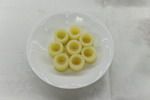 |
Rinsing |
Hairy gourds should be rinsed thoroughly and peeled. |
Remove surface contaminants such as sand and mud. Peel and set aside. |
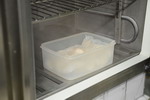 |
Defrosting |
Defrost frozen shrimps, scallops and coral clams in a refrigerator at 4 oC or below. |
Defrosting in a refrigerator at 4 oC or below not only ensures food safety but also keeps the fresh taste of seafood. |
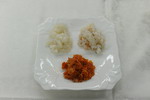 |
Cutting | Cut two hairy gourds into several sections. Scoop out the pulp to give hairy gourd rings. Dice other ingredients: frozen shrimps (3 pcs), frozen scallops (2 pcs) and frozen coral clams (2 pcs). | Cutting hairy gourds into ring-shaped sections and other ingredients into dices makes it easier to cook them thoroughly. |
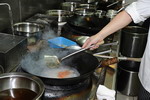 |
Blanching | Blanch diced shrimps, scallops and coral clams in boiling water. Drain them dry when cooked and set aside. | Blanching is a method of cooking which can ascertain easily that ingredients are cooked thoroughly and takes less time than stir-frying raw ingredients from scratch. |
 |
Cooking | Cook the hairy gourd rings in chicken stock with low heat and set aside. | Patience is needed for cooking the hairy gourds. Cook with low heat until the hairy gourds are 60-70% done. Turn off the heat and put on the lid. Poaching the hairy gourds in hot stock ensures they soak up the flavours and stay firm. |
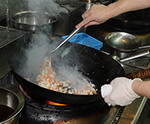 |
Stir-frying |
|
|
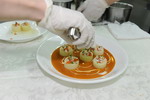 |
Saucing | Heat up the lobster soup. Add cornflour to thicken the soup and dish up. Garnish the soup with fresh cream and put the hairy gourd rings on the soup. Ready to serve. | Attention should be paid to the expiry date and storage temperature of fresh cream. |
Tips from Chef CHAN:
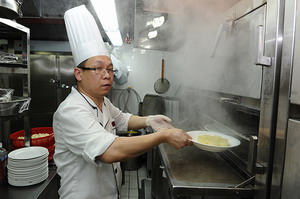
- Use fresh ingredients. Defrost frozen seafood in a refrigerator at 4 oC or below to keep it in its best shape.
- The lobster soup should be freshly prepared every day and used as soon as possible to ensure its delicious taste and bright colour. Besides using suitable amounts of sugar, chicken powder and salt as seasoning, a dash of sesame seeds and parsley can be added to remove the fishy taste of lobster.
- Fresh cream should be stored in a refrigerator at 4 oC or below. Pay attention to the expiry date and use up the cream as soon as possible after the packaging is opened.
Food Safety Plan Corner
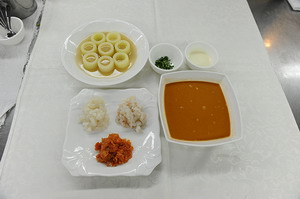
Seafood Stuffed Hairy Gourds
Ingredients
Hairy gourds, shrimps, scallops, coral clams, lobster shell, pure milk and fresh cream
Seasoning
Salt, sugar, chicken powder and cornflour
Steps
- After removing lobster meat from shell, stir-fry the shell in a wok heated with oil until fragrant. Then add hot water and pure milk, and season with salt, sugar and chicken powder. Set aside.
- Defrost frozen shrimps, scallops and coral clams in a refrigerator at 4 oC or below.
- Rinse ingredients with water.
- Cut hairy gourds into sections. Scoop out the pulp to give hairy gourd rings. Cook the hairy gourds thoroughly in chicken stock with low heat. Set aside.
- Dice shrimps, scallops and coral clams. Then blanch them in boiling water until cooked.
- Return the blanched shrimp, scallop and coral clam dices to the wok and stir-fry until fragrant. Stuff them into the hairy gourd rings.
- Finally, heat up the lobster soup. Add cornflour to thicken the soup and dish up. Garnish the soup with fresh cream and put the hairy gourd rings on the soup. Ready to serve.
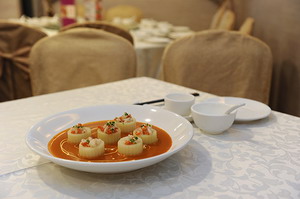
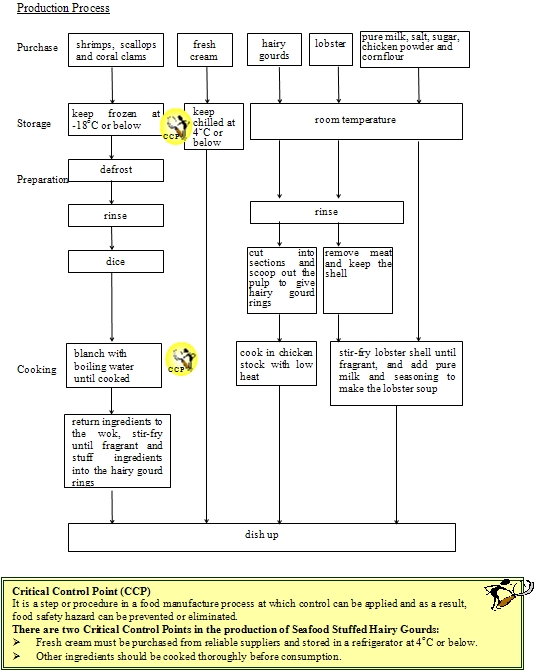
Briefing of Activities
Trade Consultation Forum
The main topics discussed in the Trade Consultation Forum held in 2012 were as follows:
At the Thirty-third Meeting conducted on 23 February, the Centre for Food Safety (CFS) began by reporting on the progress of Small Volume Exemption (SVE) applications. The " Control of Gamma-butyrolactone (GBL) under the Dangerous Drugs Ordinance", the progress of the " Trade Guidelines on Preparation of Legible Food Label" and issues concerning " Nutrition and Health Claims on Prepackaged Food " were also discussed with trade members. Finally, the CFS introduced the amendments to the "Microbiological Guidelines for Ready-to-eat Food" and the related technical meetings, which trade members were encouraged to attend.
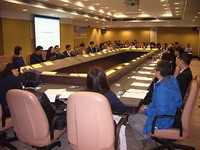
The Thirty-fourth Meeting was held on 25 April. The CFS briefed trade members on the progress of SVE applications, the " Report on Polybrominated Diphenyl Ethers " and the progress of the " Regulatory Framework for Pesticide Residues in Food in Hong Kong". Other topics on the agenda included "Trade Guidelines for Reducing Sugars and Fats in Foods (Draft)" and "Draft Trade Guidelines on Preparation of Legible Food Label". The CFS also briefed trade members on the enforcement strategy against labelling irregularities of locally manufactured prepackaged festive foods and on the requirements for durability indication of prepackaged food. In the end, the CFS reported on the findings of its joint study with the Consumer Council on nutrition labelling and related claims on prepackaged food for infants and young children in Hong Kong.
At the Thirty-fifth Meeting held on 28 June, the CFS began by reporting on the progress of SVE applications, and then briefed trade members on the guideline levels of the radiological standard for bottled water under routine condition and following a radiological emergency, the "Report on the First Hong Kong Total Diet Study: Pesticide Residues" and the "Pesticide Residues in Food Regulation". Lastly, the CFS responded to enquiries from trade members concerning gutter oil and canola oil.
The Thirty-sixth Meeting was held on 28 September. At CFS' invitation, a representative of the Agriculture, Fisheries and Conservation Department briefed trade members on the implementation of Accredited Farm Scheme in Mainland China. Other topics on the agenda included "Report of the Study on Sodium Content in Local Foods", "Import Control of Milk", "Iodine Content in Infant Formula" and "Provision of Appropriate Instructions for the Use in Powdered Infant Formula". The CFS also briefed trade members on the results of the 35 th Session of the Codex Alimentarius Commission. Finally, the Regional Symposium: "Food Claims: Truth and Myth" was introduced and trade members were encouraged to actively participate in the Symposium.
The Thirty-seventh Meeting was held on 7 November. At CFS' invitation, a representative of the Department of Health briefed trade members on the "Hong Kong Code of Marketing and Quality of Formula Milk and Related Products and Food Products for Infants and Young Children". The meeting also covered the "Report on Fatty Acid Esters of 3-monochloropropane-1, 2-diol in Food", "Trade Guidelines for Reducing Sugars and Fats in Foods", "Nutrition Labelling in Restaurants" and "Guidelines on the Use of Aluminium-containing Food Additives".
Details of the discussions at the meetings can be found on the following webpage:
http://www.cfs.gov.hk/english/committee/committee_tcf.html
Upcoming Activities
Talk Series on "Make a Wise Food Choice"
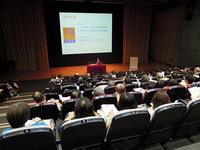
The CFS will organise, in collaboration with food trade associations, food safety talks during the period from July to September. The talks are designed to promote, to the general public and the food trade alike, the concept of making a wise food choice, sourcing food or food ingredients from hygienic and reliable shops, and choosing food according to one's health condition. Besides, the opportunity will be taken through the talks to introduce ways to reduce sodium content in food. It is hoped that by raising awareness on the importance of food safety and healthy diet, everyone can enjoy food in a safe and healthy way. Active participation by all sectors is welcome. For the venues and details of these talks, please visit the CFS website (http://www.cfs.gov.hk).
Food Safety Q&A
| Q: | There are different types of olive oils. What is the correct way to label them? How can olive oil be used in cooking to make healthier dishes? |
|---|---|
| A: | 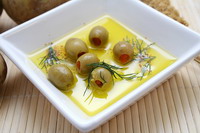
The existing food legislation in Hong Kong does not provide any interpretation for olive oils, nor are there any provisions on the composition standards for these oils. In general, oil products which contain olive fruits or pomace as their ingredients can be divided into three main categories, namely, virgin olive oil, olive oil and olive-pomace oil.
According to the definitions by the Codex Alimentarius Commission, the designation "olive oil" shall only be used to refer to virgin olive oils and olive oils. All three types of oils are edible as long as they meet the relevant standards. Rich in unsaturated fatty acid, they have similar fatty acid composition. However, comparing with olive oil and olive-pomace oil, virgin olive oil usually contains more oleic acid or free fatty acid (acid value). Generally speaking, refined olive oils have a higher cooking temperature (smoke point) than pressed olive oils, and are generally better suited to cooking and deep frying. Virgin olive oil, which has a higher acid value and a lower smoke point, is usually used for salad dressing. Edible oil manufacturers should, in accordance with the types and properties of the olive oils, clearly list the name or designation, composition and suggested cooking method of the oil products on food labels. This can help customers select the right products according to their own needs. There is no difference between olive oils and other types of oils in terms of the energy provided by them (i.e. each gram contains 9 kilocalories). The food industry should supply more dishes prepared by low-fat cooking methods such as steaming, poaching, roasting and baking, instead of deep frying in oil. When making salad, olive oil should be served separately from the food or main dish (e.g. put in a separate container) and not to be added to the food until consumption. In this way, consumers can choose to reduce their intake of fats and oils. |
Truth against Fallacy
Energy Drinks ≠ Sports Drinks
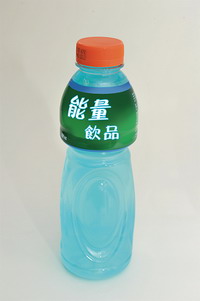
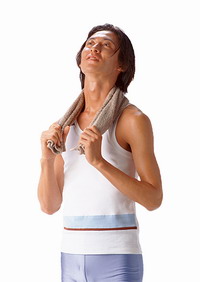
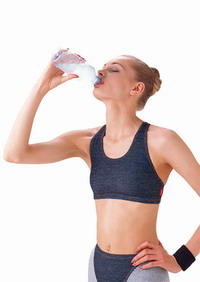
The caffeine content in a can of energy drink is much the same as that in a cup of coffee. Moreover, other ingredients in energy drinks such as taurine and glucuronolactone can either be found in natural food or produced in the human body. Except for caffeine which might cause adverse effects such as nervousness or anxiety in children or people with caffeine allergy, there is no evidence that any other substances in energy drinks can pose serious health risks.
However, the Scientific Committee on Food of the European Union considered that the adverse health effects caused by energy drinks may be due to the interactions between constituents in energy drinks, alcohol and physical exercise. The potential interplay of the above three parameters might lower consumers' awareness of alcohol intoxication, cause rapid loss of body water and sodium in the short run, and subsequently interfere with the heart rate and blood pressure. All these effects could pose health risks to consumers.
As some energy drinks are added with energy enhancing ingredients such as caffeine and B vitamins, as well as other substances such as taurine (a kind of amino acid) and glucuronolactone (a carbohydrate), such drinks may "mobilise energy" by stimulating the nervous system. Some energy drinks may also contain an energy source (e.g. carbohydrates). Energy drinks should not be confused with sports drinks which rehydrate the body and provide sugars and minerals, such as sodium and potassium.
As at present, the Codex Alimentarius Commission has not set any standards in relation to energy drinks. In Hong Kong, there is no specific legislation governing the standards of energy drinks. However, in Australia, formulated caffeinated beverages (energy drinks) must contain no less than 145 mg and no more than 320 mg of caffeine per litre of drink.
Advice for the Trade:
- The trade should ensure that their energy drinks comply with local legislation and are fit for human consumption.
- Energy drinks should be labelled with an indication that they are not recommended for children, pregnant women and individuals with caffeine allergy.
- Energy drinks should not carry misleading claims such as suggesting that they can reduce the requirement for sleep or are good for quenching thirst during exercise.
Brain Gym
Questions
- Are fruits and vegetables in general good sources of dietary fibre and vitamin C?
- Are all fruits and vegetables cholesterol-free and with a low sodium content?
- How does norovirus spread?
- How to tell when chicken meat is thoroughly cooked?
Answers
- Yes
- Yes
- Faecal-oral route via contaminated food and water is the major route of transmission. Other routes of transmission include : close contact with infected person , direct contact with contaminated object and via aerosol or droplet.
- The chicken meat should be heated until the internal temperature of the meat reach es 75 oC or above and then continue to cook for at least 30 seconds. If, after cooking, the juices are still pink in colour or blood is visible when the chicken meat is cut open, the meat should be cooked again until it is well done.
Enquiry and Subscription
Printed copies of the Food Safety Express can be collected at the Communication Resource Unit located at 8/F, Fa Yuen Street Municipal Services Building, 123A Fa Yuen Street, Mong Kok, Kowloon. For enquiry, please call 2381 6096. The public may also visit the website of the CFS ( http://www.cfs.gov.hk) for the online version.